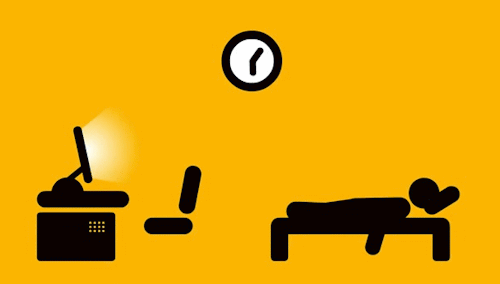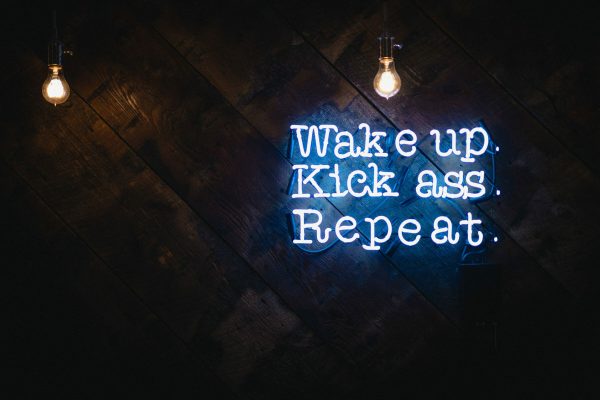Checking emails while watching Netflix? Spending an hour on Facebook instead of finishing a proposal? Getting distracted by the pile of chores stacking up?
Welcome to the wonderful, yet challenging world of working from home!
I've been working from home since 1999. Through trial and error, I found a system that works for me — a set of protocols that keep me sane, focused and able to enjoy the flexibility that escaping the cubicle offers. Today, I want to share them with you.
The 6 Keys to Working from Home and Getting Stuff Done
When my business was new, working from home almost felt like a vacation. That said, it did take a while to get into the swing of things and to turn my home office space into one of optimal productivity.
It started with calls from family and friends asking if I could run this errand or that. People thought that because I worked from home, I didn’t really work. This was back in the early days of “telecommuting” and home offices, so I understand the inclination. But it started sending me down the wrong path. I had no boundaries and no “blueprint” for working from home.
It was easy not to work when I should have been working or, on the flip side, to work when I shouldn't have been working.
I'd walk past the home office on a Saturday and do a quick check of the emails. (It would be far worse today, thanks to smartphones.) Next thing you know, five hours had gone. Likewise, getting up to stretch after working hard for two hours often turned into doing a load of laundry and the dishes. (Ha! That never really happened, but it’s my blog post, so I can pretend it did).
In early 2001, I forced myself to comply with a few guidelines — mostly because my wife was due to have a baby and I knew the summer would be wacky. I’ve pretty much stuck to these rules since then and they've helped keep me focused and balanced. As a seasoned professional running a profitable business from home, I hope these tips can now help you.
1. Create a Designated Office Space
Have a space in your house that is used solely for work and ensure that you work only there. Sure, it’s ok to pay the bills and balance the chequebook from your designated workspace, but this shouldn’t be where you surf the web on the weekends.
And, by the way, your bedroom is the WORST PLACE to set up a home office. Bedrooms are for sleep. Don’t mix the two spaces.
2. Set Working Hours
Have set hours that you work and set hours that you play and rest.
Generally speaking, I work from about 7:30 a.m. until about 5:00 p.m. Sure, I run over sometimes, but I also start late. What I don’t do is work after 9:00 p.m. There’s nothing wrong with working at 9:00 p.m if that time suits your body clock, but it doesn't work for me.
Like with everything else in business, find your sweet spot. It may vary from day to day, but once you've found your rhythm, try to stick with it.
Whatever you do, don’t work seven days a week.
Don’t even work six. We’re not meant to do that. For me, that means I never work on the weekends. Never. It may mean Mondays and Thursdays off for you. Just find what suits you best to ensure you take the time needed to recharge.
3. Embrace the Flexibility
Working from home is great because it affords us the freedom and flexibility we want — and deserve. Don't be so hard on yourself that you never get a chance to enjoy that flexibility. Everything I mentioned in point #2 is a guideline. Allow yourself to be flexible when you need to be, but try to stick to a maximum number of hours per day and week.
Just remember that those hours should be something reasonable (like between 30 and 50).
So, go ahead and take a Wednesday off because you want to. Don’t make up the time and don't feel guilty about it. Give it a try. It won’t hurt. I promise!
4. Plan Your Days Well
Each Monday, the first thing I do is sit down and plan the week. I use the Stephen Covey method of scheduling my big rocks first — one per “role” I play in my life (Husband/Father, Business Owner, Son/Sibling, Friend, Community Member).
I try to have one thing in each category that I want to get done that week. I schedule those first and then I schedule the slightly smaller (less important) things from those categories around it. This is also a good time to delegate tasks, so then I jump into Asana and assign the busy work to my team.
Each day, I revisit the previous day as well as the day ahead. Then, I plan that day by adding in tasks around bigger “rocks”.
Doing things this way allows me to keep my focus on the important things and not get bogged down with unnecessary jobs or distractions.
Free Online Training
Want even more tips to run your business better?
5. Get Out!
Working from home shouldn't mean “never leave the building”. Otherwise, you run the risk of getting cabin fever pretty quickly. I have found that spending a couple of hours every few days in a local coffee shop helps a great deal.
Find a relatively quiet cafe, bring the laptop and set up shop for a couple of hours. This is a good opportunity to work on your business instead of in it. Use this time to write blog posts, think about and execute marketing, set goals, take a webinar or an online class or connect with your remote team. The list goes on.
Better yet, if there’s a co-working space near you, take advantage of it on a casual basis. Most have drop-in rates or plans for a couple of days a month. As the WordPress community has taught us, everyone is a potential collaborator or advisor and no one is really a competitor.

Even if you don't feel like going somewhere else to work, get out for some fresh air and perspective. You may even find that it lends itself to some easy impromptu networking. Human interaction is good. Usually.
6. Boundaries for Clients
When I established this work-from-home framework, one of the first things I needed to do was set a few boundaries for clients. For instance:
I generally avoid answering the phone too often. I expect people to leave a message and I will call them back at a time that works for me.
Email is the same way. I read through emails in the same sitting, quickly eliminating the ones I don’t need to answer.
And texts? Forget it. I refuse to answer text messages from clients. Once they start texting you, they will believe it’s okay to text you at any time of the day or night, including weekends, and they will expect an answer relatively quickly. No, sir! Not for me.
Setting Client Boundaries
Establish communication guidelines with new clients by way of a Welcome EmailOutline your regular working hours and let them know that you answer emails and return phone calls all at once, at a time that works best for you.

If a voicemail or text can be easily answered by email, do so. Set the precedent that trivial phone calls are not needed. It's good to have the “paper” trail of email anyway as it helps with miscommunication. Unless something desperately needs to be talked through, reply with a courteous, professional email:
“Hey Jim, I got your voicemail…”
Finally, unless you know that it will be a 2-minute call, have the client schedule a time to chat with you using an online scheduler (such as Calendly, ScheduleOnce or the one built into AgileCRM). This helps clients respect your time and boundaries, which allows you to stick to them.
Wrap-Up
I’m not preaching to you. I know not everyone can make this work and certainly not overnight. But if you’re struggling with this kind of thing and feeling overwhelmed while working from home, maybe pick one or two of the above to start with. “Season to taste” of course. And then go elevate!
I'd love to hear from you about any tips that help you stay focused and productive when working from home. Do you need strict parameters to keep on task or do you have to force yourself to walk away from the computer? Let me know what works for you.








